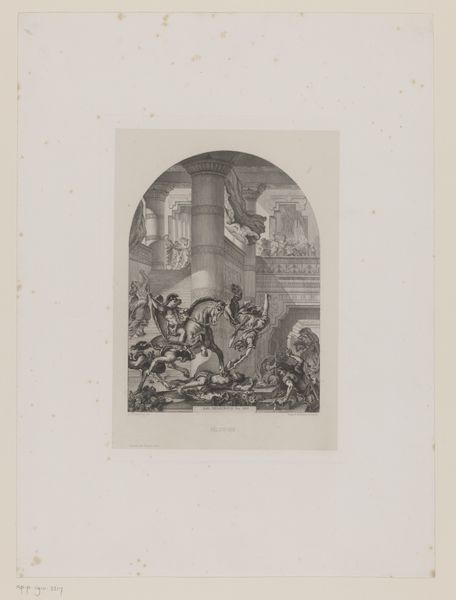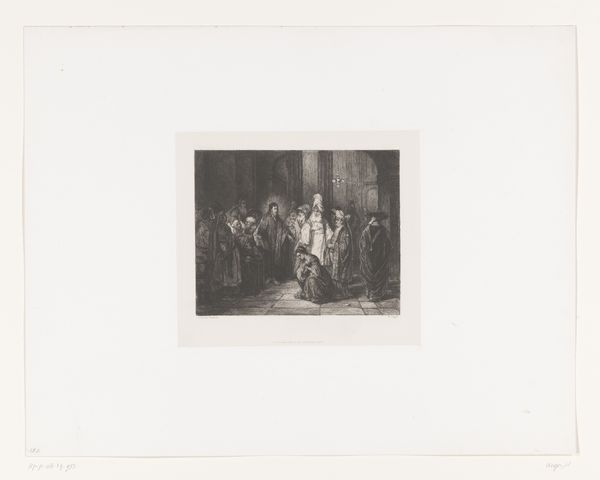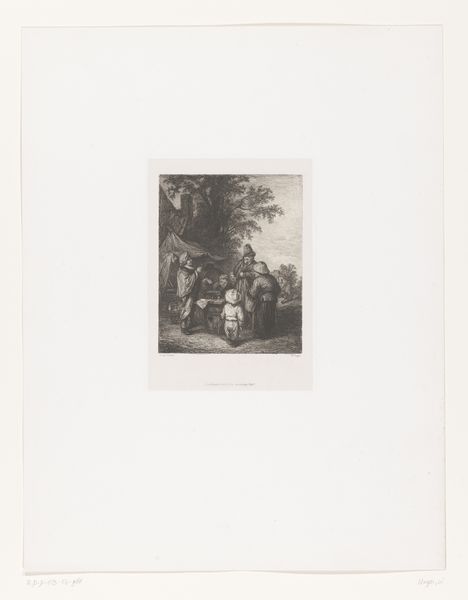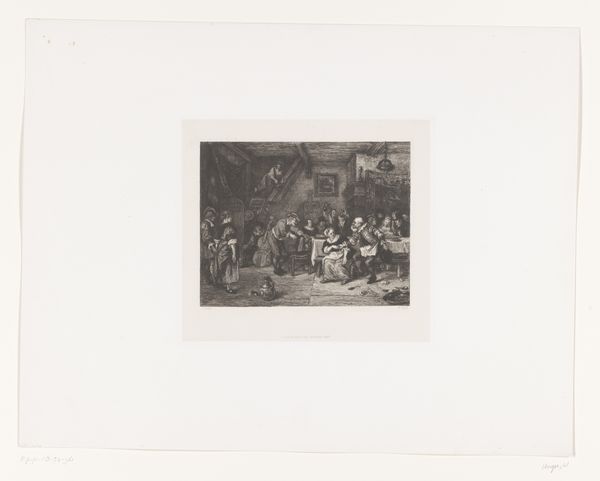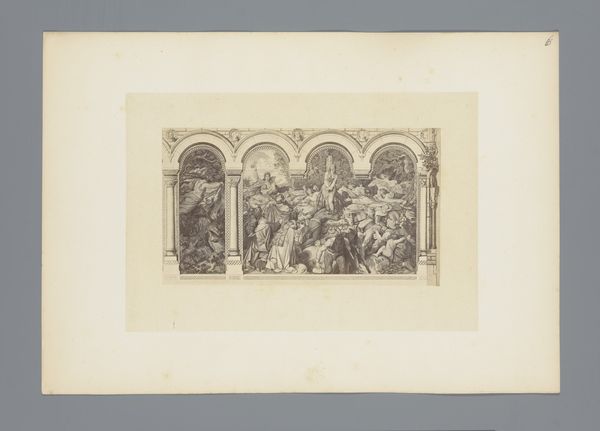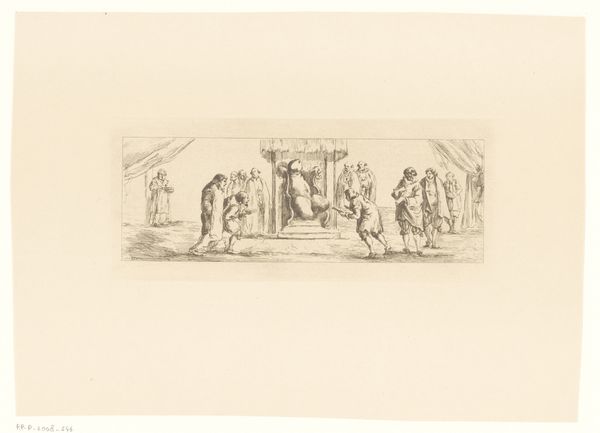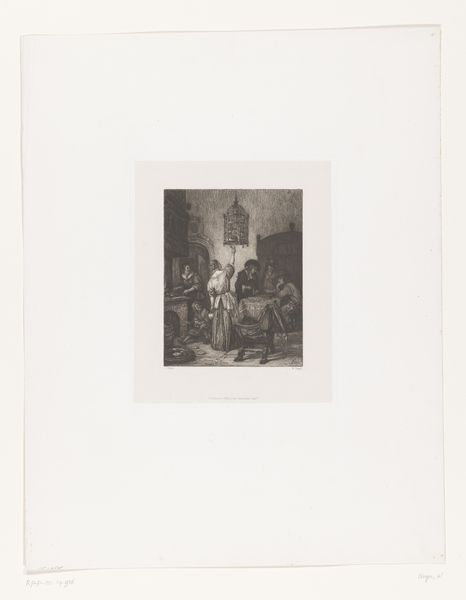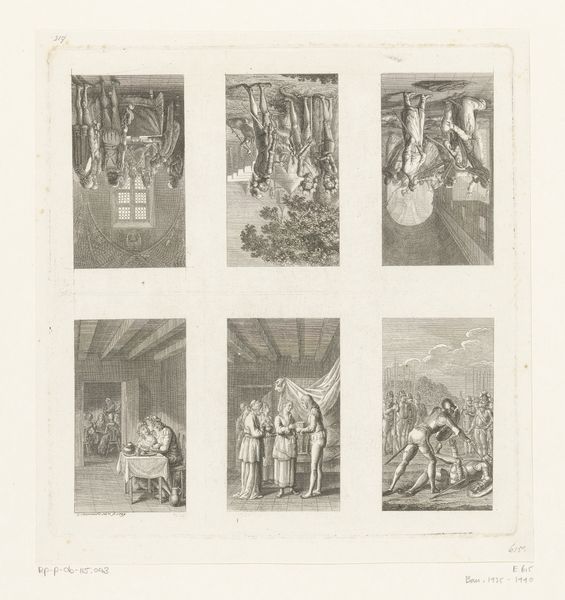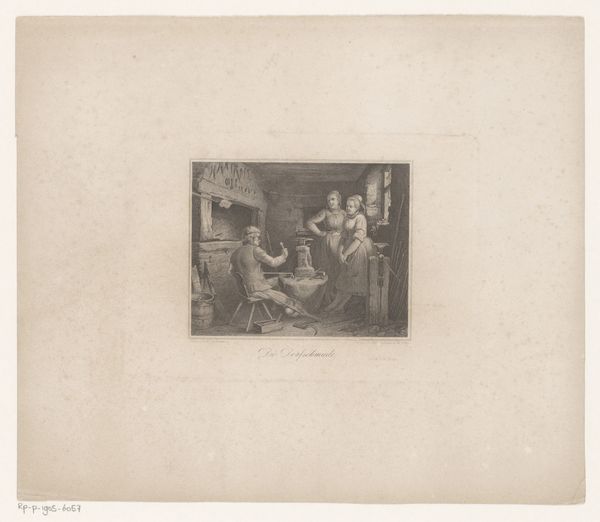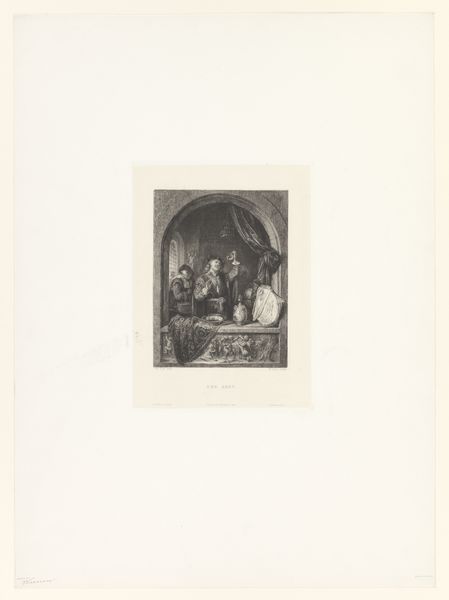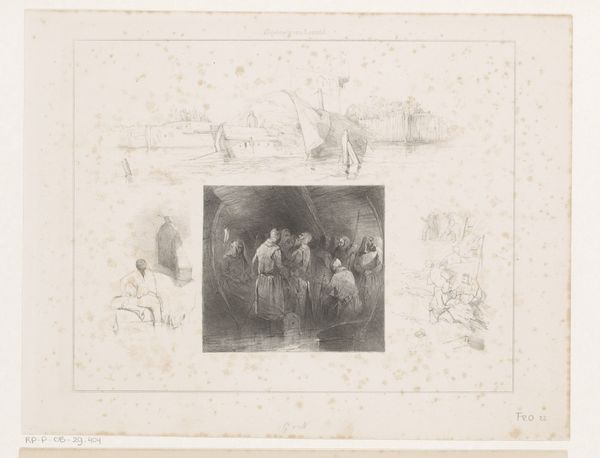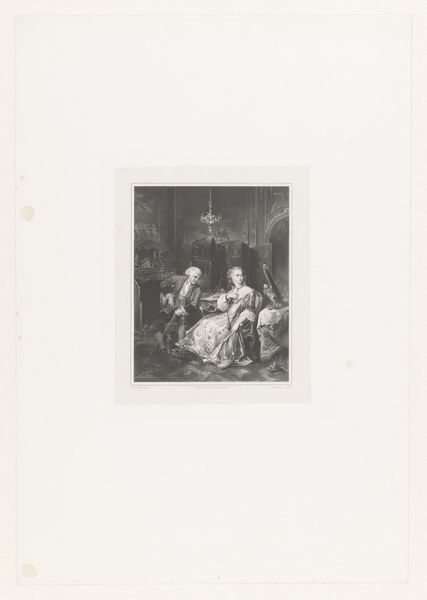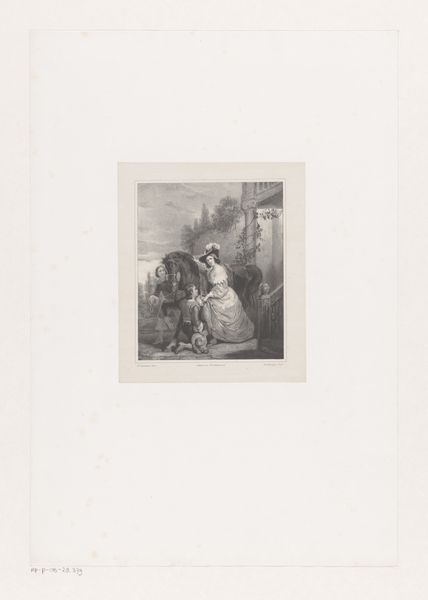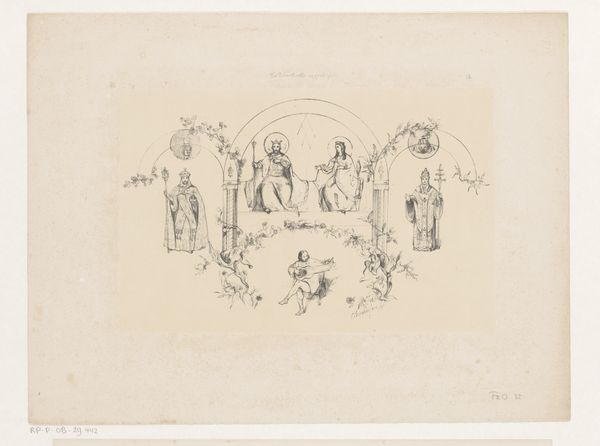
print, etching, intaglio, engraving
# print
#
etching
#
intaglio
#
figuration
#
history-painting
#
engraving
Dimensions: height 296 mm, width 399 mm
Copyright: Rijks Museum: Open Domain
Curator: The Rijksmuseum is home to this engraving by William Unger, dating from between 1861 and 1889. It’s called *Kruisigingsaltaar*, which translates to “Crucifixion Altar”. Editor: Wow, even in black and white, it feels heavy. All those mournful figures…you can practically feel their despair echoing off the paper. Curator: It certainly evokes a strong emotional response. The print is rendered in intaglio techniques: etching and engraving, methods that allowed for a wide tonal range. It represents the crucifixion in a triptych format. Editor: Triptych, that's right! Like a folded altar piece, which feels appropriate given the subject matter. Look how the composition funnels your gaze toward Christ—then bounces you back out to those side panels with the… are those grieving figures and angels? Curator: Precisely. The left panel presents Mary, cloaked in mourning, while the right panel features Saint Veronica holding the sudarium, bearing the image of Christ’s face. These figures are cornerstones of Christian iconography, reflecting distinct gendered responses to grief and devotion. Editor: It hits different, doesn’t it? I’m thinking of contemporary performance art where the artist's body becomes a site of protest, almost like Unger, through his sharp lines, transforms Christ's body into this stark visual argument. Do you think he's using historical painting as a means of some kind of social or political commentary? Curator: That’s a compelling question. One could examine this artwork through a lens that understands religious artworks produced in the 19th century within specific ideological aims: didactic, moral, often reinforcing prevailing power structures. Editor: Which maybe explains why this image has some real staying power; I mean, we're still grappling with some of these structures, right? Grief, faith, even power... it’s like this old etching keeps throwing new shadows into today’s conversations. Curator: Precisely, seeing how visual and artistic representations of those narratives influenced broader understandings of faith, martyrdom, and perhaps even, societal obedience—makes appreciating works like this far more engaging. Editor: Definitely makes you think...makes you *feel*, too, which might be the whole point.
Comments
No comments
Be the first to comment and join the conversation on the ultimate creative platform.
